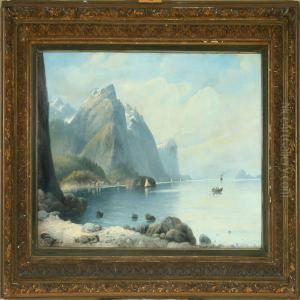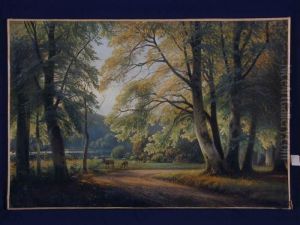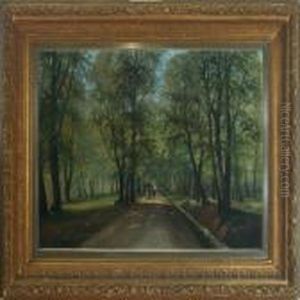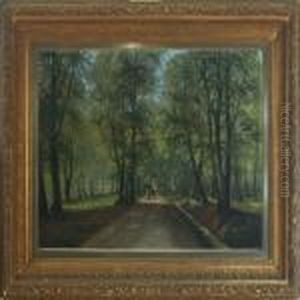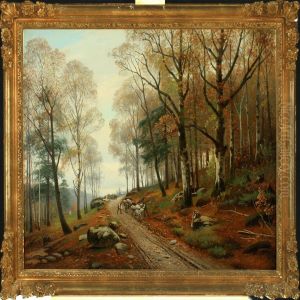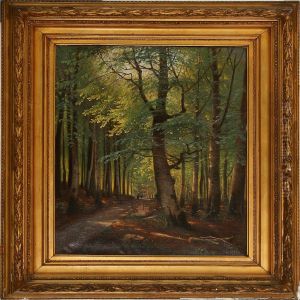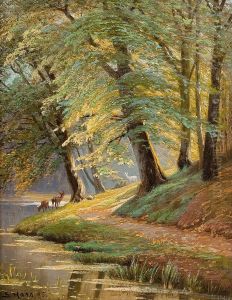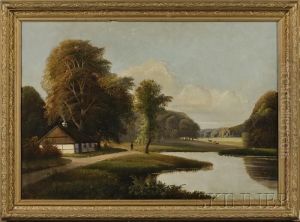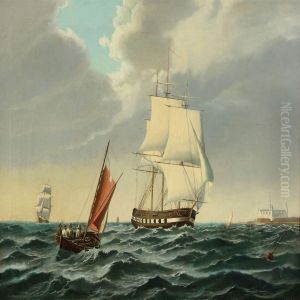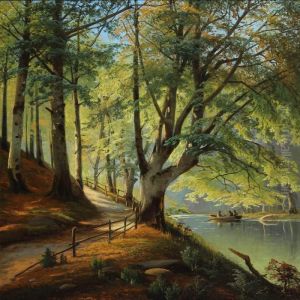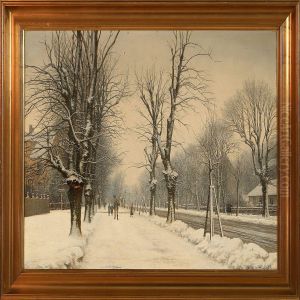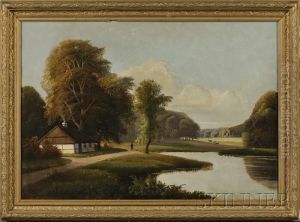Siegfried A. Sofus Hass Paintings
Siegfried A. Sofus Hass (1864-1948) was a Danish painter known for his contribution to the art scene of his time, particularly in the realm of landscape painting. Born in Copenhagen, Denmark, Hass was part of a generation of artists who embraced the plein air painting approach, which involved painting outdoors to capture the natural light, shades, and colors of the landscape more accurately.
During his early years, Hass received his artistic training at the Royal Danish Academy of Fine Arts, an institution that has nurtured many prominent Danish artists. There, he honed his skills and developed a keen interest in the natural world, which would become the central theme of his work. His education was traditional, emphasizing classical painting techniques, which he would later apply in his landscape works.
Hass's paintings often depicted the Danish countryside, coastlines, and rural scenes. He was adept at capturing the varying moods of nature, from tranquil pastoral settings to the more dramatic effects of light and weather. His style was characterized by a naturalistic approach, with an attention to detail and a subdued color palette that reflected the often overcast skies of Denmark.
Throughout his career, Hass exhibited his work frequently and was involved in several art associations. He participated in exhibitions at Charlottenborg Palace, the prestigious annual art show in Copenhagen, where Danish artists could present their work to the public.
Despite his contributions to Danish art, Siegfried A. Sofus Hass remains a lesser-known figure compared to his contemporaries. Nevertheless, his landscapes continue to be appreciated for their serene beauty and his ability to capture the essence of the Danish environment. Hass's work is represented in various Danish museums and collections, where it serves as a testament to his skill and dedication to the tradition of landscape painting.
Hass's artistic legacy is a reflection of the late 19th and early 20th-century art movements in Denmark, where emphasis was placed on realism and capturing the natural beauty of the country. His death in 1948 marked the end of a career that spanned over several decades, during which time he made a lasting impact on the Danish art scene.
